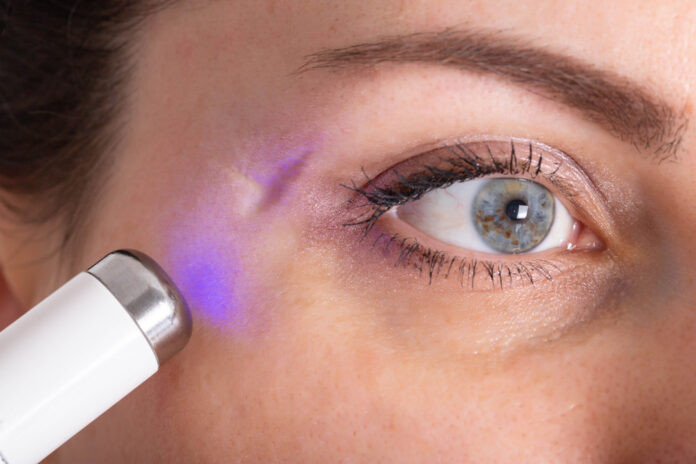Scars can often feel like a permanent reminder of past injuries, surgeries, or skin conditions. Fortunately, modern dermatological solutions offer ways to reduce their appearance significantly. One such approach is laser therapy, a non-invasive yet powerful treatment that helps fade scars gradually and effectively. Whether your scar is the result of acne, trauma, or surgery, Scar Laser Treatment in Dubai has become a popular choice for those seeking smoother, clearer skin without undergoing surgical procedures.
Understanding Scars and Their Behavior
Before diving into how laser treatment works, it’s essential to understand what scars are. Scars form as a natural part of the healing process when the skin repairs itself after injury. The severity, size, and appearance of a scar depend on various factors such as:
- Depth and size of the wound
- Location on the body
- Age, genetics, and skin type
- Type of wound (surgical, burn, acne, etc.)
There are several types of scars:
| Depressed scars are usually caused by acne or chickenpox | Description |
|---|---|
| Atrophic | Depressed scars usually caused by acne or chickenpox |
| Hypertrophic | Raised, red scars that stay within the wound boundary |
| Keloid | Raised scars that extend beyond the original injury area |
| Contracture | Often caused by burns, resulting in tightened skin |
| Stretch marks | Formed due to rapid stretching of the skin (pregnancy, weight change) |
What Is Scar Laser Treatment?
Scar laser treatment is a skin resurfacing technique that uses focused light energy to reduce scar visibility. The laser removes the outer damaged skin layers and stimulates the production of new, healthy skin. It works by targeting the blood vessels in the scar tissue or breaking down excess collagen fibers, depending on the type of laser used.
There are two main categories of lasers used for scar treatment:
- Ablative Lasers: These remove the outer layers of the skin. Examples include CO2 and Er:YAG lasers. They are typically used for deeper scars.
- Non-ablative Lasers: These penetrate the skin without removing its top layers, stimulating collagen growth over time. Examples include Nd:YAG and pulsed dye lasers (PDL).
How Laser Treatment Fades Scars
Laser therapy does not erase scars but helps to significantly reduce their visibility and texture over multiple sessions. Here’s how the process unfolds over time:
1. Initial Skin Response
The laser energy penetrates the scar tissue, causing controlled micro-injuries in the skin. This prompts the skin to begin its natural healing response. During this stage, you may experience redness, swelling, and peeling as the skin sheds damaged cells.
2. Collagen Remodeling
The damaged tissue is gradually replaced with new collagen and elastin fibers. This improves the skin’s tone, texture, and elasticity. Collagen remodeling is the key phase where visible improvement in the scar’s appearance starts becoming noticeable.
3. Progressive Scar Fading
Over subsequent weeks and sessions, the scar’s color, depth, and roughness begin to diminish. For red or pigmented scars, laser energy helps reduce discoloration by targeting melanin or broken capillaries beneath the skin.
4. Final Results
Long-term results appear with consistent treatment and care. By now, scars are typically flatter, smoother, and lighter. While the scar may not disappear entirely, its visibility is significantly reduced, blending better with the surrounding skin.
Factors That Influence the Effectiveness of Laser Scar Treatment
Not all scars or skin types respond the same way to laser therapy. Several variables influence how well the treatment works:
| Factor | Impact on Results |
|---|---|
| Age of Scar | Newer scars tend to respond faster than older ones. |
| Skin Type and Tone | Darker skin may require customized laser settings to prevent pigmentation changes. |
| Type of Scar | Hypertrophic and keloid scars may require combination treatments (e.g., steroids + laser). |
| Laser Type Used | The precision of the device affects collagen production and resurfacing quality. |
| Post-Treatment Care | Proper sun protection and skincare greatly enhance healing and outcomes. |
| Number of Sessions | Multiple treatments spaced weeks apart offer cumulative improvements. |
Benefits of Laser Scar Treatment
Laser therapy has become a go-to option for many patients due to the following benefits:
- Non-invasive and relatively pain-free
- Customizable for various scar types and skin tones
- Minimal downtime (especially with fractional lasers)
- Stimulates natural healing and collagen production
- Suitable for both face and body areas
Comparison of Scar Laser Treatment with Other Modalities
| Treatment Type | Mechanism | Best For | Limitations |
|---|---|---|---|
| Laser Therapy | Light-based stimulation of collagen & pigment | Textured, red, or pigmented scars | Multiple sessions needed |
| Microneedling | Needle-induced micro-injuries for collagen boost | Shallow acne scars, stretch marks | Less effective for deep scars |
| Chemical Peels | Chemical exfoliation of top skin layers | Superficial scars and discoloration | Risk of pigmentation in darker skin tones |
| Steroid Injections | Reduces inflammation and flattens keloids | Raised or keloid scars | Doesn’t improve color or texture |
| Dermabrasion | Physical resurfacing using a rotating device | Deep scars or uneven texture | Chemical exfoliation of the top skin layers |
FAQ’s:
1. Can laser treatment completely remove a scar?
No, laser treatment cannot completely erase scars, but it can significantly reduce their size, color, and texture, making them far less noticeable.
2. How many sessions are typically needed?
Most individuals require 3 to 6 sessions spaced 4 to 6 weeks apart, depending on the scar type and response to treatment.
3. Is the treatment painful?
Laser treatments cause mild discomfort, often described as a snapping or tingling sensation. Topical anesthetics are usually applied to minimize any pain.
4. Are results permanent?
Yes, once the scar has faded through treatment, the results are generally long-lasting. However, ongoing sun protection and skincare are important to maintain improvements.
5. Can laser treatment be used on any part of the body?
Yes, laser scar treatment is safe for most areas, including the face, back, chest, legs, and arms.
Final Thoughts
Scar laser treatment offers a scientifically backed, non-surgical option for those looking to reduce the visibility of scars over time. By leveraging the body’s natural healing mechanisms and promoting collagen regeneration, it smooths out rough textures and fades discoloration effectively.































